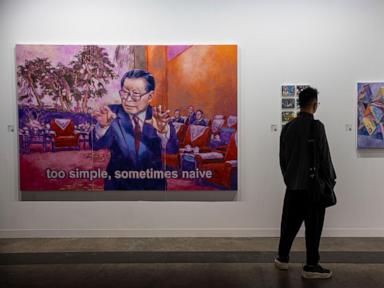(Bloomberg) -- Tens of thousands of partying rugby fans from around the world tested Hong Kong’s new 50,000-seat stadium over the weekend, and there was one common topic of conversation: how the catering failed to keep up with demand.
Most Read from Bloomberg
- Gold-Rush Fever Returns to Historic New Zealand Mining Town
- What Frank Lloyd Wright Learned From the Desert
- Bank Regulators Fight for Desks as OCC Returns to New York Tower
- These US Bridges Face High Risk of Catastrophic Ship Strikes
- Charter Schools, Colleges Push Muni Debt Distress Near Record
Despite no shortage of outlets, service was slow, lines were long and in many areas hot meals repeatedly ran out over the course of the three-day Cathay/HSBC Hong Kong Sevens. Frustration was evident among fans as they wandered from floor to floor seeking food, which included burgers, tandoori chicken wraps and char siu sausage rolls.
On Saturday morning, fans in the South Stand — the most raucous side of the stadium — waited up to two hours to order drinks at a bar, which only had one person taking payments. In an outdoor stall at Sunday lunch time, a scribbled list of four dishes replaced the official menu on display. At another outlet, staff dressed in gray uniforms lined up to place orders that had been made by guests in corporate boxes.
The chaos blemished an otherwise celebratory occasion. Kai Tak Stadium is the centerpiece of a HK$32 billion ($4.1 billion) sports park developed on the site of the city’s former airport. The stadium has been specifically designed by global architect firm Populous for the Sevens, the city’s biggest annual sporting event, and is a key part of Hong Kong leader John Lee’s tourism push. The tournament was previously held at a smaller stadium on Hong Kong Island.
Robyn Arthey, who works in finance in Hong Kong, is a regular attendee of the Sevens. She arrived early Saturday morning to avoid queuing to enter the adults-only South Stand, which is well known for colorful costumes, but got stuck in a two-hour line for drinks instead.
“We had just assumed that because it was a new stadium and there’s a lot of research that’s been done on crowd control, that they would’ve had it completely down and it would’ve been systematically very well managed — but it was not,” said Arthey, who came dressed as a strawberry and expected the 15-minute lines for drinks that she was used to at the old stadium.
Some 110,000 fans attended the games over the three days, according to World Rugby Chairman Brett Robinson.
The stadium has taken on greater political importance as Hong Kong looks to repair its international image and economy in the years following a crackdown on dissent, pandemic restrictions and China’s economic slowdown. It’s also a chance for redemption for the government after a series of event mishaps — football legend Lionel ...





